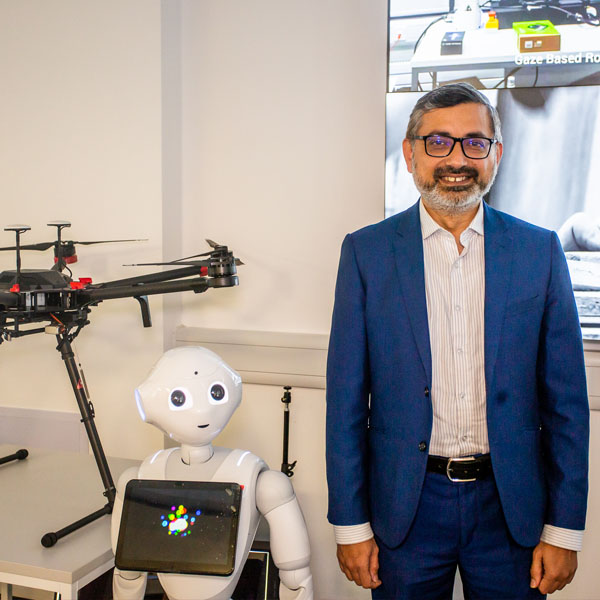
A legacy that lives on
By Sophie Lambert
As well as being one of UofG's most prominent figures, Lord Kelvin’s discoveries have had a lasting impact around the globe. The work that Kelvin began in the areas of communications and energy engineering is continued by researchers at the University today.
One who credits Lord Kelvin as being instrumental in his work is Professor of Thermofluids Manosh Paul, who is based in the Energy & Sustainability Research Group at the James Watt School of Engineering.
"Lord Kelvin’s groundbreaking work and innovations have left a number of legacies,” he explains. “The impact can be seen in various fields such as electromagnetism, telecommunications and thermodynamics. His enduring legacy, however, is founded on his ability to combine his deep theoretical understanding with practical applications that led to true innovations that continue to shape the world today.
“Our interdisciplinary work in bioenergy technologies, hydrogen energy and thermal energy storage spans areas linked to the net-zero vision we have and some of the work could provide a pathway towards net-negative emissions.”
"Today, we can see why Kelvin’s strategy of linking theories to real applications is so important. Through his multidisciplinary understanding of science and engineering, one can easily be inspired by his visionary thinking.”
– Professor Manosh Paul
As well as taking inspiration from Lord Kelvin’s dual approach of theory and practicality, Professor Paul’s work involves elements of Kelvin’s original research. “We are using some of his innovations and theoretical aspects in terms of understanding the problems we are facing.”
A lifelong polymath
Part of the reason that Lord Kelvin remains such a central figure in the fields of science and engineering today is the breadth and scope of his work. As well as his innovations in precision measurement and thermodynamics, Kelvin made important contributions to the development of communication technologies.
His work was critical to the transatlantic telegraph cable project, a step which took us closer to a global communication network, and a precursor to the current work of Professor of Communication Systems Muhammad Imran, Head of the Communications, Sensing & Imaging (CSI) research group.
“Lord Kelvin is widely recognised for his roles in physics and thermodynamics; however, he received his title for his contributions to communications,” explains Professor Imran. “Namely, laying the telegraphic cable across the Atlantic and thereby connecting Europe with North America for sending telegraph signals. This was a challenging project because, over such a long distance, the signals would disperse and interfere with one another. Kelvin’s deep understanding of physics enabled him to identify ways of overcoming these challenges.
“The second contribution we don’t talk about so much is his fundamental understanding of the electromagnetic nature of light. His contributions to the mathematical analysis of electricity and magnetism are instrumental in understanding electromagnetics, which is fundamental to wireless communication today.
Horizon scanning
“Kelvin did a lot of blue-sky research where the end goal might not be immediately apparent," Professor Imran continues. "His ability to see beyond the immediate project amazes me and this is what we try to do in our CSI hub research."
The pioneering work of Lord Kelvin offered a greater understanding of the world and a more connected global community thanks to improved communication. The work that he began in the areas of communications and energy engineering is continued by researchers and academics at the University today and, indeed, he lends his name to the Lord Kelvin/Adam Smith Fellowships, a scheme designed to support promising emerging leaders at the University. His legacy is alive and well as the scientific community continues to be inspired and driven by his example.
This article was first published October 2024.

Professor Imran’s group is working on a variety of important breakthroughs. They are developing advanced tetrahertz antennas like the one above, designed to underpin ultra-fast 6G communications networks, and humanoid robots such as that pictured with Professor Imran below.


